Cybersecurity Trends 2025: The Newest Threats and Solutions
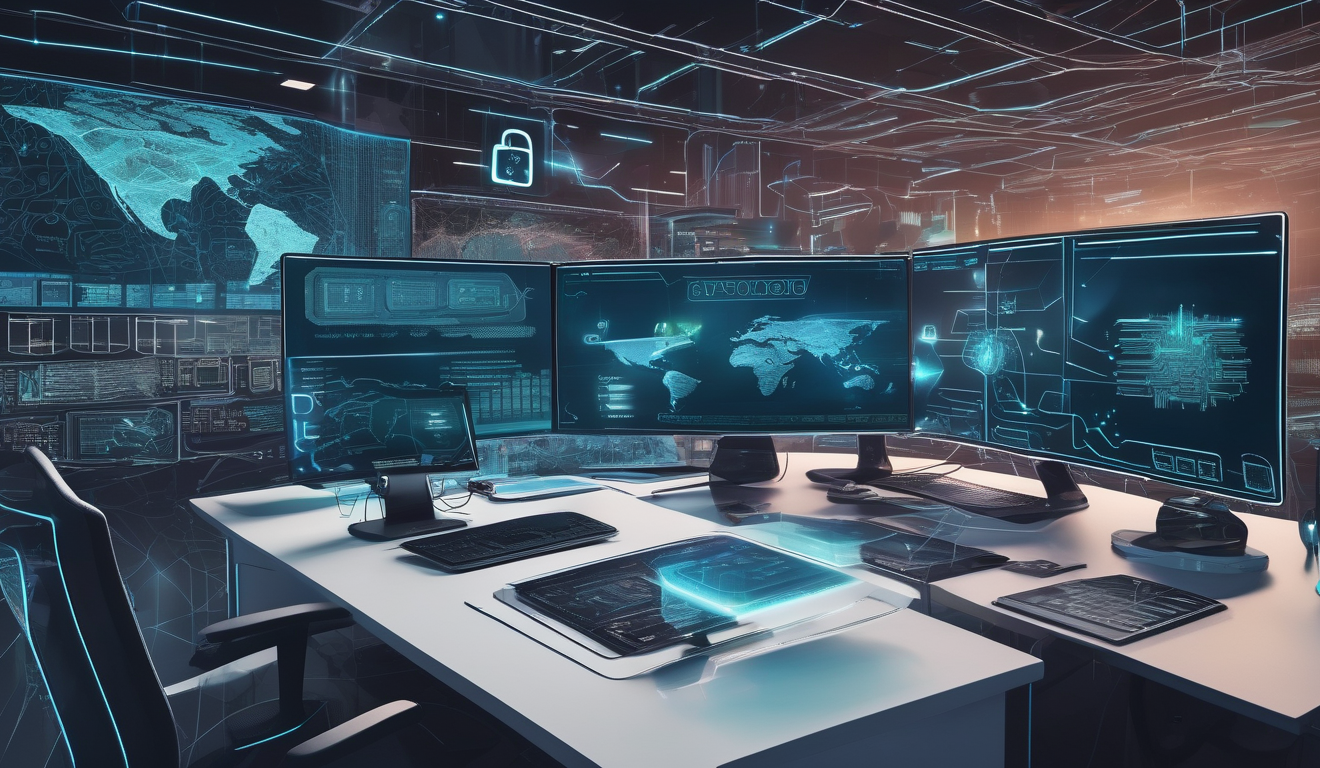
As we leap into 2025, the cybersecurity landscape is evolving at a breathtaking pace. With the rise of sophisticated technologies, organizations are finding themselves in a constant battle against a new wave of threats. From ransomware attacks that paralyze operations to phishing schemes that prey on unsuspecting employees, the stakes have never been higher. So, what can businesses do to stay ahead in this digital chess game? This article dives deep into the emerging threats and the innovative solutions being developed to combat them, ensuring that you are well-equipped to protect your digital assets.
As technology evolves, so do the tactics of cybercriminals. The year 2025 is expected to see a surge in advanced persistent threats (APTs) that exploit vulnerabilities in both software and human behavior. Cybercriminals are becoming more adept at using social engineering techniques, making it crucial for organizations to stay vigilant. Moreover, the proliferation of the Internet of Things (IoT) devices has expanded the attack surface, making it easier for hackers to find entry points into secure networks.
Artificial Intelligence (AI) and Machine Learning (ML) are not just buzzwords; they are transforming the way we approach cybersecurity. These technologies are being utilized to predict, identify, and respond to cyber threats more effectively than ever before. Imagine having a virtual security guard that never sleeps! Automated systems can enhance the speed and accuracy of identifying potential security breaches, allowing organizations to respond before a minor issue escalates into a full-blown crisis.
Automation in threat detection is becoming crucial. With the sheer volume of data generated daily, relying on human analysis alone is no longer feasible. Automated systems can sift through vast amounts of information, identifying anomalies and potential threats in real-time. This not only saves time but also ensures a more comprehensive security posture.
Automated incident response systems are changing the game. These systems can minimize damage and reduce response times during cyber incidents. Imagine receiving a notification of a breach and having a system that can immediately take action, isolating affected areas and mitigating risks. This rapid response can be the difference between a minor hiccup and a catastrophic breach.
Despite its advantages, automation presents challenges. Over-reliance on automated systems can lead to complacency among staff, making them less vigilant. Additionally, automated systems are not infallible; they can generate false positives, leading to unnecessary alarm and resource allocation. Therefore, balancing automation with human oversight is essential for a robust cybersecurity strategy.
While technology plays a vital role, the human element remains critical. Training and awareness are paramount in strengthening an organization’s cybersecurity posture. Employees must be educated about the latest threats and best practices to recognize suspicious activities. After all, even the most advanced systems can be undermined by a single careless click.
With evolving threats, regulations are also changing. Organizations must stay informed about key regulatory trends impacting cybersecurity practices and compliance requirements for 2025. As we navigate this complex landscape, understanding these regulations will be crucial for maintaining trust and securing sensitive information.
As cyber threats are global, so are compliance standards. Increasingly, businesses must adhere to international regulations that govern data protection and cybersecurity practices. This is not just a box-ticking exercise; non-compliance can result in hefty fines and reputational damage.
Data privacy laws are tightening worldwide. Organizations must adapt their cybersecurity strategies to comply with these regulations, ensuring that sensitive data is adequately protected. This means investing in technology that not only secures data but also provides transparency and accountability in data handling practices.
Innovations in technology are shaping the future of cybersecurity. From blockchain to quantum computing, the next wave of solutions promises to enhance defenses against cyber threats in 2025 and beyond. Staying ahead of these trends is essential for organizations looking to fortify their cybersecurity frameworks.
Blockchain technology is gaining traction in cybersecurity. By providing enhanced security measures for data integrity and protection, it offers a decentralized method of verifying transactions and securing sensitive information. Think of it as a digital fortress that makes it incredibly difficult for hackers to breach.
Quantum computing presents both challenges and opportunities. While it has the potential to revolutionize data processing, it also poses a threat to traditional encryption methods. Organizations must prepare for a future where quantum computing could render existing security measures obsolete, making it imperative to explore quantum-resistant encryption solutions.
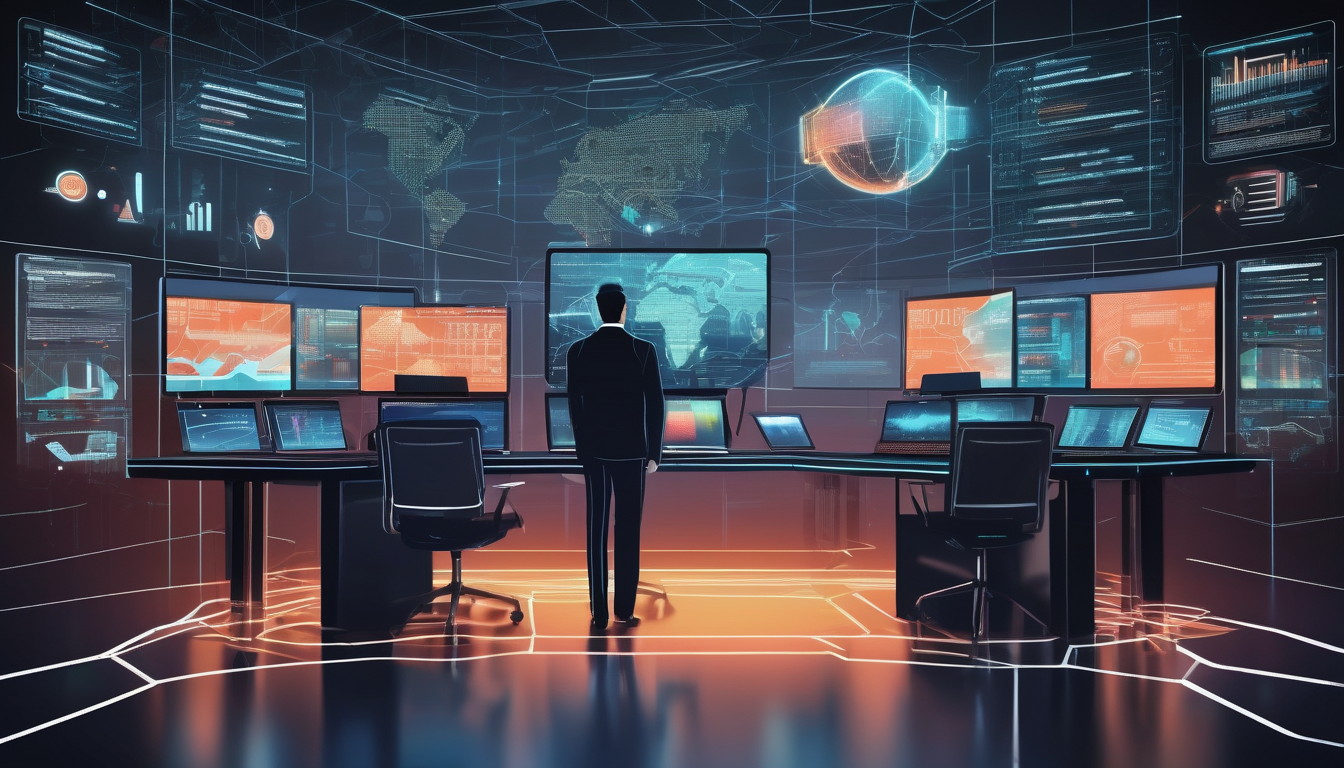
Emerging Threat Landscape
As we venture deeper into the digital age, the threat landscape is evolving at an unprecedented pace. Cybercriminals are not just getting smarter; they’re becoming more sophisticated and organized. In 2025, we can expect to see a range of new threats that could shake the foundations of even the most secure organizations. Imagine a world where your personal data is not just at risk but actively exploited by advanced AI systems designed to outsmart traditional cybersecurity measures.
One of the most alarming trends is the rise of ransomware-as-a-service. This model allows even the least skilled hackers to launch devastating attacks. With a simple subscription, they can access tools that were once only available to elite cybercriminals. As a result, ransomware attacks are predicted to increase dramatically, targeting critical infrastructure and demanding exorbitant ransoms.
Another emerging threat is the use of deepfake technology. This technology, which manipulates audio and video to create realistic but fake content, can be weaponized for fraud, misinformation, and social engineering attacks. Imagine receiving a video call from your boss, only to realize it’s a deepfake attempting to extract sensitive information from you. The implications are staggering!
Moreover, the Internet of Things (IoT) is expanding rapidly, with billions of devices connecting to the internet. Each new device is a potential entry point for cybercriminals. With smart homes, wearables, and industrial IoT devices becoming commonplace, the attack surface is larger than ever. It’s crucial for organizations to understand that securing these devices is not just an option; it’s a necessity.
In this ever-changing landscape, organizations must stay ahead of the curve. Here are some of the key threats to watch out for in 2025:
- Supply Chain Attacks: Targeting third-party vendors to infiltrate larger organizations.
- Credential Stuffing: Using stolen credentials to gain unauthorized access to accounts.
- AI-Powered Attacks: Utilizing artificial intelligence to automate and enhance attack strategies.
As we look to the future, it’s clear that understanding these emerging threats is vital for any organization aiming to protect its assets and maintain trust with its customers. The landscape may be daunting, but with the right strategies and tools, we can navigate these treacherous waters and emerge stronger.
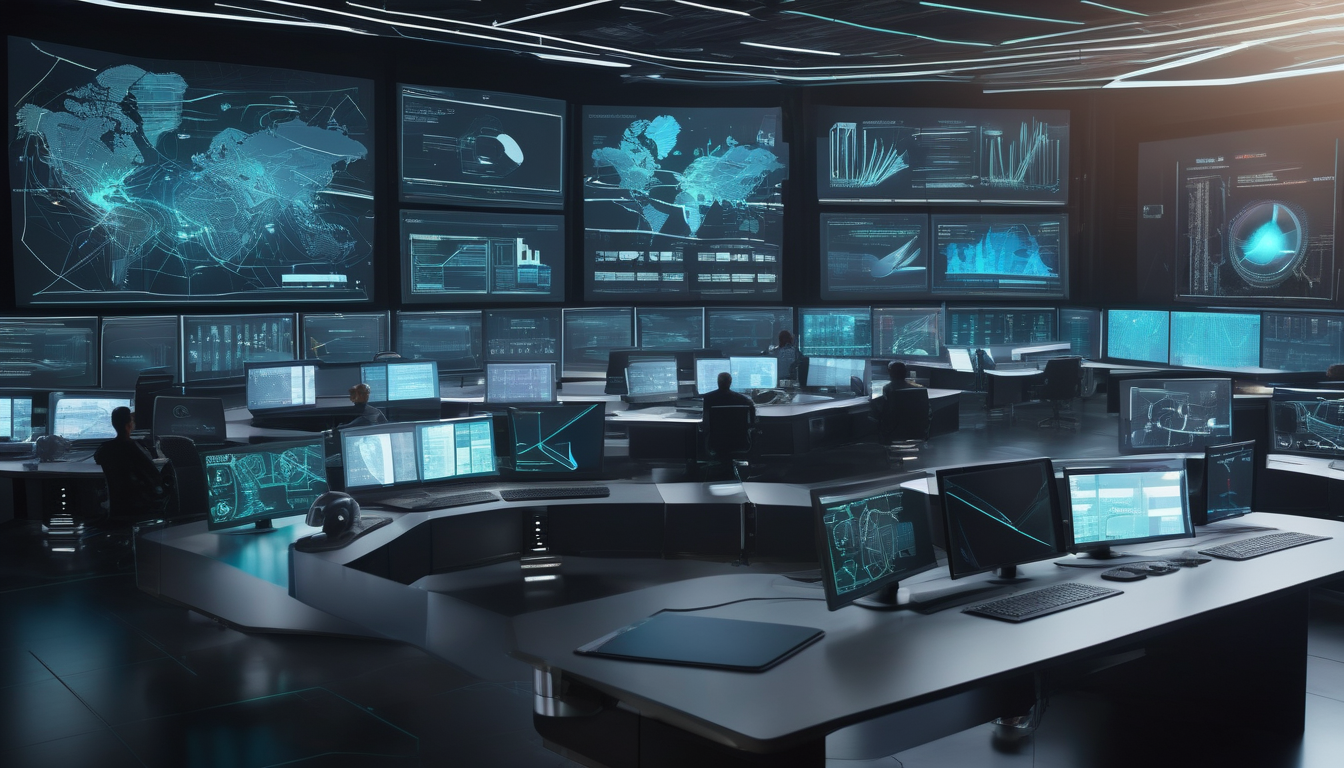
AI and Machine Learning in Cybersecurity
Artificial Intelligence (AI) and Machine Learning (ML) are not just buzzwords; they are revolutionizing the way organizations approach cybersecurity. In 2025, the integration of these technologies into security frameworks is expected to become more pronounced, as they enable businesses to predict, identify, and respond to cyber threats with unprecedented efficiency. Imagine having a digital bodyguard that learns from every encounter, becoming smarter and quicker at detecting potential threats. That’s the power of AI and ML in action!
One of the most exciting aspects of AI in cybersecurity is automated threat detection. Traditional methods of identifying breaches often rely on human intervention, which can lead to delays. However, AI systems can analyze vast amounts of data in real-time, spotting anomalies that might indicate a security breach. For instance, if a user suddenly downloads an unusually large amount of data, an AI system can flag this behavior instantly, allowing for quicker investigation. This kind of proactive detection is crucial in a landscape where every second counts.
As organizations increasingly adopt AI-driven solutions, automated threat detection is becoming a critical component of their cybersecurity strategies. These systems utilize complex algorithms that learn from past incidents to enhance their detection capabilities. The result? A dramatic increase in both the speed and accuracy of identifying potential security breaches. According to recent studies, organizations that implement AI for threat detection experience a 30% reduction in response times compared to those relying solely on traditional methods.
Automated incident response systems are also changing the game. With the ability to act on detected threats almost immediately, these systems can minimize damage and reduce response times significantly. Imagine a fire alarm that not only alerts you but also dials 911 and unlocks the doors for emergency services. That’s how automated incident response systems work, ensuring that organizations can tackle threats head-on before they escalate.
However, it’s essential to acknowledge that automation comes with its own set of challenges. Over-reliance on automated systems can lead to complacency among staff, who may neglect the human aspect of cybersecurity. Furthermore, automated systems can sometimes generate false positives, diverting resources away from real threats. Striking a balance between automation and human oversight is crucial for a robust cybersecurity posture.
In conclusion, while AI and Machine Learning are paving the way for innovative cybersecurity solutions, organizations must remain vigilant. Embracing these technologies while ensuring human involvement will be key to navigating the complex cybersecurity landscape of 2025.
Automated Threat Detection
In today’s fast-paced digital world, the need for has never been more critical. As cyber threats become increasingly sophisticated, organizations are realizing that relying solely on human oversight is no longer sufficient. Automated systems are stepping in to fill the gaps, offering a proactive approach to identifying potential security breaches before they escalate into full-blown incidents.
Imagine trying to find a needle in a haystack. Now, think about how much easier that task would be with a magnet. Automated threat detection acts like that magnet, sifting through vast amounts of data at lightning speed, pinpointing anomalies that could signify a cyber attack. By leveraging advanced algorithms and machine learning techniques, these systems can analyze patterns and behaviors, flagging anything that deviates from the norm.
One of the standout features of automated threat detection is its ability to operate around the clock. Unlike human analysts who need breaks and downtime, automated systems tirelessly monitor networks and systems continuously. This constant vigilance means that threats can be identified and addressed in real-time, drastically reducing the window of opportunity for attackers.
However, it’s essential to understand that automation isn’t a silver bullet. While these systems can significantly enhance the speed and accuracy of threat detection, they are not infallible. False positives can occur, leading to unnecessary alerts that may overwhelm security teams. Therefore, organizations must find a balance, integrating automated systems with human expertise to ensure comprehensive threat management.
Moreover, the implementation of automated threat detection comes with its own set of challenges. Organizations need to invest in the right technology and ensure that their teams are adequately trained to interpret the data generated by these systems. This dual focus on technology and human skills is crucial for building a robust cybersecurity posture.
In conclusion, automated threat detection is transforming the cybersecurity landscape, providing organizations with the ability to respond swiftly to emerging threats. By combining advanced technology with human insight, businesses can create a formidable defense against the ever-evolving tactics of cybercriminals.
Impact on Incident Response
In the fast-paced world of cybersecurity, the impact of automated incident response systems cannot be overstated. These systems are revolutionizing how organizations handle security breaches, acting like a well-oiled machine that swiftly detects and mitigates threats. Imagine a fire alarm that not only alerts you to smoke but also douses the flames before they spread. This is precisely what automated incident response aims to achieve.
By leveraging advanced algorithms and real-time data analysis, these systems can significantly reduce the response time to incidents. For instance, while a human team might take several minutes to assess a threat, automated systems can identify and respond to potential breaches in mere seconds. This rapid response is crucial, especially when every second counts in preventing data loss and minimizing damage.
Moreover, automated systems enhance the accuracy of threat detection. Traditional methods often rely on human judgment, which can be prone to errors. In contrast, automation analyzes vast amounts of data and recognizes patterns that might elude even the most experienced cybersecurity professionals. This capability not only improves the likelihood of catching threats early but also helps in maintaining a consistent security posture across the organization.
However, it’s essential to recognize that while automation offers numerous benefits, it also comes with its own set of challenges. For instance, over-reliance on automated systems can lead to complacency among human teams. Organizations must strike a balance between automation and human oversight to ensure that they remain vigilant against evolving threats. In fact, a strong cybersecurity strategy integrates both technology and human expertise, creating a synergy that enhances overall effectiveness.
In summary, automated incident response systems are transforming the cybersecurity landscape by providing faster and more accurate responses to threats. As organizations embrace these innovations, they must also focus on training their teams to work alongside these systems, ensuring a comprehensive approach to cybersecurity that combines the best of both worlds.
Challenges of Automation
While automation in cybersecurity presents numerous advantages, it is not without its challenges. As organizations increasingly rely on automated systems to detect and respond to threats, several potential pitfalls can arise. One of the primary concerns is the over-reliance on technology. When organizations depend too heavily on automated solutions, they may neglect the human element that is essential for effective cybersecurity.
Moreover, automated systems can sometimes produce false positives. This means that legitimate activities may be flagged as threats, leading to unnecessary alarm and wasted resources. For instance, if an automated system incorrectly identifies a benign action as a security breach, it can divert attention from actual threats, causing a delay in response time. It’s crucial for organizations to balance automation with human oversight to ensure accuracy.
Another significant challenge is the rapid evolution of cyber threats. Cybercriminals are constantly adapting their tactics, and automated systems can struggle to keep pace. While these systems can learn from past incidents, they may not always recognize new types of attacks or sophisticated methods employed by hackers. Therefore, continuous updates and improvements to automated systems are necessary, which can be resource-intensive.
Additionally, there is the issue of security vulnerabilities within the automation tools themselves. If these tools are not adequately secured, they can become targets for attackers. Hackers may exploit weaknesses in the automation software to gain access to sensitive data or disrupt operations. Organizations must ensure that their automated systems are regularly assessed for vulnerabilities and patched accordingly.
In summary, while automation is a powerful ally in the fight against cyber threats, organizations must remain vigilant about its challenges. A balanced approach that combines automation with human expertise, regular updates, and robust security measures will be essential for effectively navigating the complex cybersecurity landscape of the future.
Human Element in Cybersecurity
In the ever-evolving world of cybersecurity, the human element remains a critical component that organizations cannot afford to overlook. While advanced technologies and automated systems are essential in combating cyber threats, they are not a panacea. Think of your cybersecurity strategy as a fortress; the walls may be strong, but if the gates are left unguarded, intruders will find a way in. This is where the human factor comes into play.
Training and awareness are paramount in creating a robust cybersecurity culture. Employees often serve as the first line of defense against cyber attacks. A single click on a phishing email can compromise an entire network. Therefore, investing in comprehensive training programs can significantly reduce the risk of human error. Organizations must educate their staff on recognizing suspicious activities and understanding the importance of following security protocols.
Furthermore, fostering a culture of accountability can enhance security measures. When employees feel responsible for their actions and understand the impact of their choices, they are more likely to adhere to best practices. Regular workshops and simulations can help reinforce this mindset. For instance, conducting mock phishing exercises can prepare employees for real-world scenarios and improve their response to potential threats.
However, it’s not just about training; communication plays a vital role as well. Organizations should encourage open dialogue about cybersecurity concerns. When employees feel comfortable reporting suspicious activities or potential breaches, it creates a proactive environment that can thwart attacks before they escalate. Establishing clear channels for reporting incidents is crucial, as is ensuring that employees know their reports will be taken seriously.
In conclusion, while technology continues to advance, the human element in cybersecurity cannot be underestimated. By prioritizing education, accountability, and communication, organizations can build a resilient defense against cyber threats. Remember, in the battle against cybercrime, your greatest asset may very well be your people.
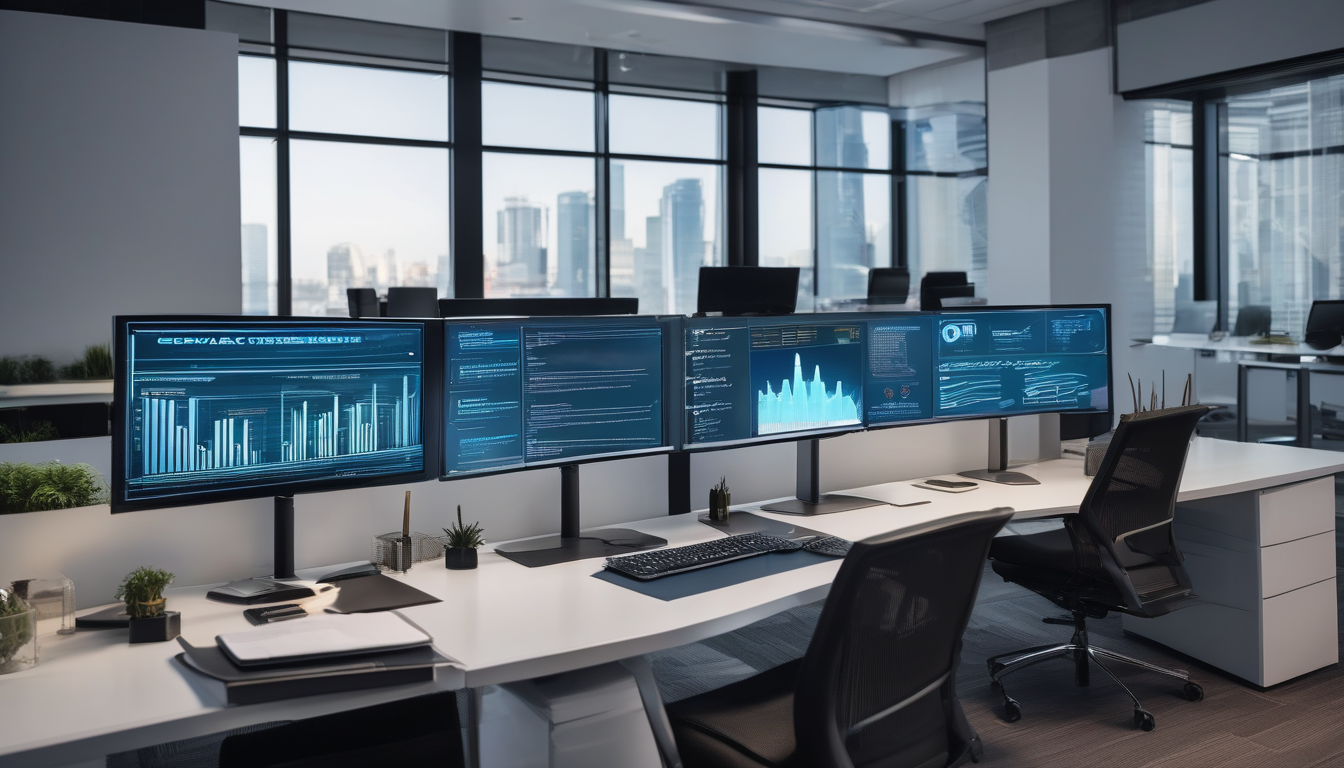
Regulatory Changes and Compliance
As we march towards 2025, the cybersecurity landscape is not just evolving in terms of technology but also in regulatory frameworks. Organizations must navigate a complex web of regulations that are being updated to address the increasing sophistication of cyber threats. With governments and regulatory bodies worldwide recognizing the urgency of cybersecurity, compliance is becoming a critical aspect for businesses. But what does this mean for your organization?
One of the most significant trends is the emphasis on global compliance standards. As cyber threats know no borders, regulatory bodies are collaborating to create unified standards that can be applied internationally. This means that organizations must not only comply with local laws but also be aware of international regulations that may impact their operations. For example, the General Data Protection Regulation (GDPR) in Europe has set a precedent, influencing similar laws in other regions.
Furthermore, data privacy regulations are tightening globally. Companies are now faced with stricter requirements regarding how they handle personal data. This shift demands a reevaluation of cybersecurity strategies to ensure compliance. Organizations may need to invest in new technologies and training programs to keep up with these evolving standards. Failure to comply can result in hefty fines and reputational damage.
To illustrate the impact of these regulatory changes, consider the following table that outlines key regulations and their implications:
| Regulation | Region | Key Implications |
|---|---|---|
| GDPR | Europe | Requires strict data protection measures and penalties for non-compliance. |
| CCPA | California, USA | Gives consumers rights over their personal data and imposes fines for violations. |
| HIPAA | USA | Mandates the protection of health information and outlines penalties for breaches. |
In conclusion, as the regulatory landscape continues to shift, organizations must stay informed and adaptable. Embracing compliance not only helps in avoiding penalties but also strengthens the overall cybersecurity posture. After all, in a world where cyber threats are constantly evolving, being proactive is the best defense.
Global Compliance Standards
As the digital world grows increasingly interconnected, the need for in cybersecurity has never been more critical. Organizations are no longer just protecting themselves from local threats; they must also consider a vast array of international regulations that govern data protection and privacy. With the rise of cybercrime transcending borders, a unified approach to compliance is essential for safeguarding sensitive information.
In 2025, we can expect to see a significant shift towards harmonized regulations across countries. This means that businesses operating globally will need to adapt their cybersecurity strategies to meet various compliance requirements. For instance, the European Union’s General Data Protection Regulation (GDPR) has set a precedent for stringent data privacy laws, influencing other regions to follow suit. Companies that fail to comply with these regulations not only risk hefty fines but also damage to their reputation.
To navigate this complex landscape, organizations should focus on understanding the following key aspects of global compliance standards:
- International Cooperation: Countries are increasingly working together to create frameworks that simplify compliance for global businesses.
- Standardization of Practices: The push for standardized cybersecurity practices will help organizations streamline their compliance efforts.
- Continuous Monitoring: Companies must implement systems that allow for ongoing compliance checks to adapt to changing regulations.
Moreover, organizations need to invest in training their employees about these global standards. Awareness and understanding of compliance requirements can significantly reduce the risk of violations. As the saying goes, “An ounce of prevention is worth a pound of cure.” By fostering a culture of compliance, businesses can not only protect themselves but also build trust with their customers.
In summary, the evolving landscape of global compliance standards in cybersecurity is a challenge that organizations must embrace. By staying informed and adaptable, they can turn compliance into a competitive advantage, ensuring they are well-prepared for the threats of tomorrow.
Data Privacy Regulations
In today’s digital age, are more critical than ever. With the increasing amount of personal data being shared online, governments and organizations are stepping up to protect individuals’ rights. By 2025, we can expect these regulations to become even more stringent, impacting how businesses operate and manage their data.
One of the driving forces behind these changes is the growing awareness among consumers regarding their privacy. People are no longer willing to accept vague terms and conditions or unclear data usage policies. Instead, they demand transparency and control over their personal information. As a result, organizations must adapt their practices to comply with new regulations, such as the General Data Protection Regulation (GDPR) in Europe and similar laws emerging worldwide.
These regulations often require organizations to implement robust data protection measures, including:
- Regular audits of data handling practices
- Enhanced security protocols to safeguard sensitive information
- Clear consent mechanisms for data collection and processing
Moreover, failure to comply with these regulations can lead to severe penalties, including hefty fines and reputational damage. For instance, companies that neglect their data privacy responsibilities could face fines that reach millions of dollars, making compliance not just a legal obligation but a business imperative.
As we look towards 2025, the landscape of data privacy regulations will likely evolve further. New technologies, such as AI and machine learning, will play a significant role in how organizations manage compliance. These technologies can help automate processes, ensuring that data handling practices align with regulatory requirements and reducing the risk of human error.
In conclusion, the importance of data privacy regulations cannot be overstated. As businesses navigate this complex landscape, they must prioritize compliance to protect not only their customers but also their own interests. By embracing these regulations and adopting best practices, organizations can build trust with their customers and secure their data in an increasingly interconnected world.
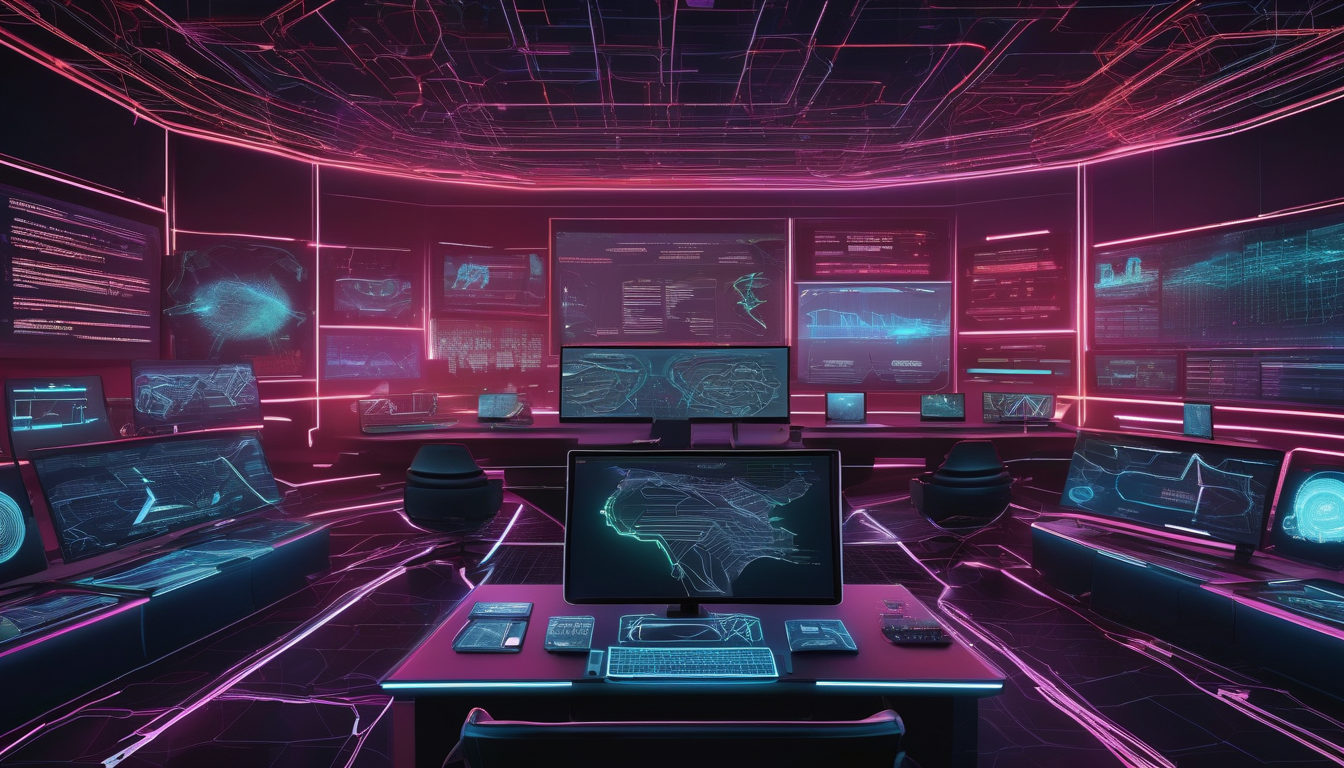
Future Technologies in Cyber Defense
As we gaze into the crystal ball of cybersecurity, it’s clear that innovation is the name of the game. The landscape is evolving rapidly, and with it, the technologies that will protect us from the increasing wave of cyber threats. In 2025 and beyond, we can expect to see a surge in advanced technologies that promise to revolutionize cyber defense. But what does that really mean for organizations trying to stay one step ahead of cybercriminals?
One of the most exciting advancements is blockchain technology. Originally designed for cryptocurrency, blockchain’s decentralized nature offers a robust solution for enhancing data integrity and security. Imagine a world where every transaction is recorded on a public ledger that is nearly impossible to alter. This could dramatically reduce the risk of data breaches and fraud. Companies are already exploring how blockchain can be integrated into their cybersecurity frameworks, creating a more transparent and secure environment.
Another game-changer on the horizon is quantum computing. While it may sound like something out of a sci-fi movie, the implications of quantum computing for cybersecurity are profound. On one hand, it poses a threat to traditional encryption methods, potentially rendering them obsolete. However, it also offers the potential for creating unbreakable encryption protocols. This duality presents a unique challenge: organizations must adapt their cybersecurity strategies to not only protect against quantum threats but also leverage quantum technologies for enhanced security.
To illustrate the impact of these technologies, consider the following table that outlines the potential benefits and challenges of blockchain and quantum computing in cyber defense:
| Technology | Benefits | Challenges |
|---|---|---|
| Blockchain |
|
|
| Quantum Computing |
|
|
In conclusion, the future of cyber defense is not just about keeping up with threats; it’s about embracing innovation. Organizations that proactively adopt these emerging technologies will not only enhance their security posture but also gain a competitive edge in an increasingly digital world. The key takeaway? Stay informed, stay adaptable, and leverage the power of technology to safeguard your valuable assets.
Blockchain for Security
In the ever-evolving world of cybersecurity, blockchain technology is emerging as a powerful ally in the fight against cyber threats. Imagine a digital fortress where every transaction is recorded in an immutable ledger, making it nearly impossible for hackers to alter or erase data. This is the essence of blockchain—its decentralized nature not only enhances security but also fosters trust among users.
One of the most significant advantages of blockchain in cybersecurity is its ability to ensure data integrity. By utilizing cryptographic techniques, blockchain can verify the authenticity of data, making it a reliable source for sensitive information. For instance, in sectors like finance and healthcare, where data breaches can have catastrophic consequences, blockchain provides a robust security framework. Here’s how it works:
- Decentralization: Unlike traditional databases that are controlled by a central authority, blockchain spreads data across a network of computers, reducing the risk of a single point of failure.
- Transparency: Every transaction on the blockchain is visible to all participants, which deters fraudulent activities and enhances accountability.
- Immutability: Once data is added to the blockchain, it cannot be altered or deleted, ensuring that records remain intact and trustworthy.
Moreover, blockchain can play a crucial role in identity verification. With identity theft on the rise, utilizing blockchain for secure digital identities can significantly reduce the risk of unauthorized access. By allowing users to control their own data, blockchain empowers individuals while minimizing the chances of data breaches.
However, despite its promising potential, integrating blockchain into existing cybersecurity infrastructures is not without challenges. The technology is still relatively new, and many organizations are grappling with how to implement it effectively. Additionally, the scalability of blockchain solutions remains a concern, particularly for large enterprises that handle vast amounts of data.
As we look toward the future, the intersection of blockchain and cybersecurity presents exciting possibilities. With ongoing innovations and a growing understanding of its benefits, blockchain could very well become a cornerstone of a more secure digital landscape, paving the way for safer online interactions and transactions.
Quantum Computing Implications
As we stand on the brink of a technological revolution, quantum computing is poised to reshape the cybersecurity landscape in ways we can only begin to imagine. This cutting-edge technology harnesses the principles of quantum mechanics to process information at speeds and efficiencies that traditional computers can only dream of. But with great power comes great responsibility—and significant risk. How will quantum computing affect our current security measures?
One of the most pressing concerns is the potential for quantum computers to break existing encryption methods. Current encryption algorithms, such as RSA and ECC, rely on the difficulty of certain mathematical problems. However, quantum computers can solve these problems exponentially faster than classical computers, putting sensitive data at risk. For instance, a quantum computer could theoretically crack RSA encryption in mere seconds, a task that would take classical computers thousands of years.
To illustrate this, consider the following table:
| Encryption Method | Time to Break (Classical Computer) | Time to Break (Quantum Computer) |
|---|---|---|
| RSA 2048-bit | Thousands of years | Seconds |
| ECC 256-bit | Decades | Minutes |
As we can see, the implications are staggering. Organizations must start preparing for a future where quantum computing could render their current cybersecurity measures obsolete. This leads to a crucial question: how can companies adapt to this emerging threat?
One promising solution is the development of quantum-resistant algorithms. These new encryption methods are designed to withstand the computational power of quantum machines. By transitioning to these advanced algorithms, organizations can safeguard their data against future quantum threats. Additionally, education and training will play a vital role in preparing cybersecurity professionals for the quantum age.
In conclusion, while quantum computing presents exciting opportunities for advancements in various fields, it also brings significant challenges for cybersecurity. The need for proactive measures and innovative solutions has never been more critical. As we move toward 2025, organizations must remain vigilant and adaptable, ensuring they are equipped to face the quantum frontier head-on.
Frequently Asked Questions
- What are the biggest cybersecurity threats expected in 2025?
As we look ahead to 2025, we can anticipate a rise in sophisticated ransomware attacks, advanced phishing schemes, and the exploitation of IoT devices. Cybercriminals are constantly evolving, making it crucial for organizations to stay updated on emerging threats.
- How is AI changing the landscape of cybersecurity?
AI and Machine Learning are game-changers in cybersecurity, enabling faster threat detection and response. These technologies help in identifying patterns that may indicate a potential breach, allowing for proactive measures to be taken before damage occurs.
- What role does automation play in incident response?
Automation significantly enhances incident response by speeding up the detection and remediation processes. Automated systems can quickly analyze threats and initiate responses, minimizing potential damage and downtime for organizations.
- Are there any challenges associated with automated cybersecurity solutions?
Yes, while automation offers many benefits, it can also lead to over-reliance on technology. This can result in gaps in human oversight and critical thinking, which are essential for effective cybersecurity.
- Why is the human element still important in cybersecurity?
Despite advancements in technology, human factors like training and awareness are vital. Employees must understand cybersecurity risks and best practices to create a robust defense against potential threats.
- What are the key regulatory changes impacting cybersecurity?
Organizations must navigate evolving regulations, including stricter data privacy laws and global compliance standards. Staying compliant is crucial for avoiding penalties and ensuring data protection.
- How can blockchain enhance cybersecurity?
Blockchain technology offers unique advantages, such as improved data integrity and security. By creating tamper-proof records, blockchain can help organizations safeguard sensitive information from cyber threats.
- What implications does quantum computing have for cybersecurity?
Quantum computing presents both risks and opportunities. While it can potentially break traditional encryption methods, it also paves the way for developing more secure cryptographic techniques to protect data.














The AI regulation and compliance section is spot on. With the rise of AI adoption, ethical considerations will be crucial.…